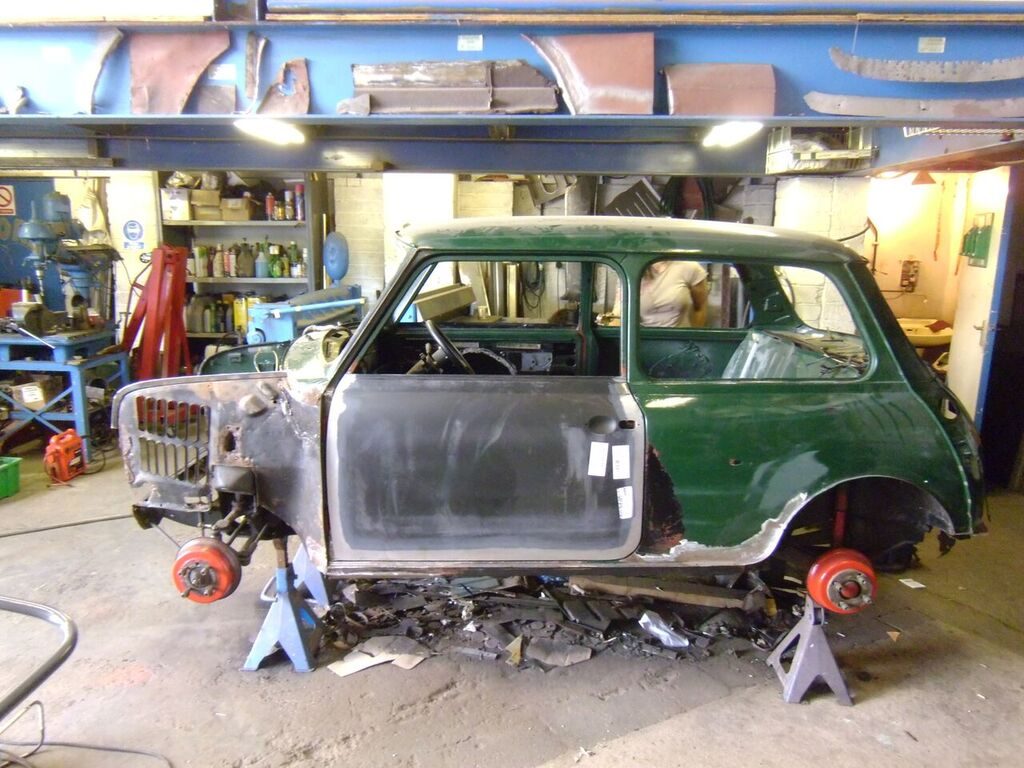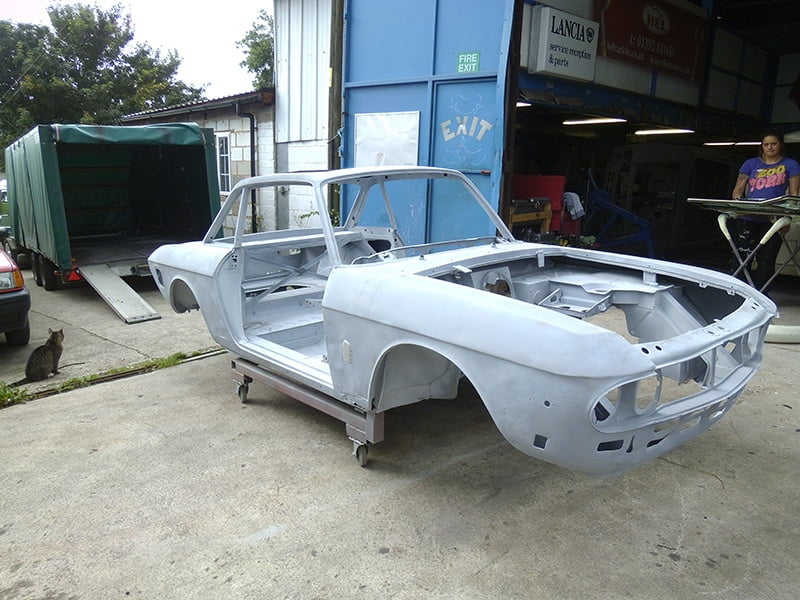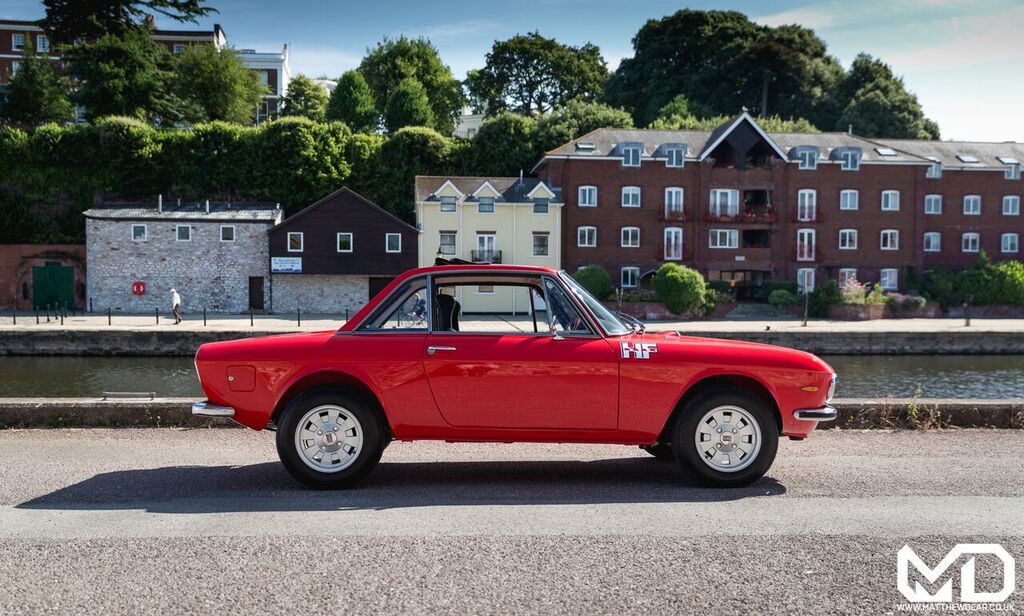As the price of original vintage cars continues to skyrocket, more and more classic car fans are turning to restoration as a way of owning the car of their dreams. But given the time, effort and money that goes into every restoration venture, is it feasible for the average classic car fan to take the plunge and invest in a project of their own?
To get the lowdown on what it takes to restore a car from trash to treasure, we spoke to the experts at RestoShack, a small restoration and fabrication workshop located in the south west of England. The body shop specialises in restoring cars from the 60s, 70s and 80s, and have worked on everything from Porsches to Volkswagens.
Here, we talk to RestoShack founder, Dave Watkins, about all things classic car — from his most memorable projects, to what it takes to restore one from the ground up. We’ve also included a range of photos showcasing some of the restoration work Dave has been involved in — read the full interview below.
Could you tell us how you first became involved in restoring cars, and how the RestoShack business came about?
I’ve been working in normal crash repairs body shops since I was 18. Some of my colleagues took on classic cars, which perked my attention. After that, I would always ask for the old cars rather than run-of-the-mill modern types.
I got to know a lot about restoration, and worked under a great coachbuilder who built aluminium car bodies. Apprenticing for him on Saturdays for free opened my eyes to the way of doing things in restoration — which differs greatly from mainstream body shops.
Years later, after honing my craft in a few other shops gaining expertise from different people, an opportunity arrived while working self employed to start my own shop. So, I decided to take all that I’d learnt over the years and apply it to my own way of doing things, and RestoShack was born.
What do you enjoy most about restoring classic cars?
I enjoy the metalwork side of a build; taking something from a broken mess to a shapely, bare metal rolling shell is quite satisfying. Once you have all the holes and rot removed and fixed, and you can gap and align all the panels, the car really starts to come back to life. Also, it gives me a chance to hone my metal shaping and forming techniques with new tools, methods and materials.
How long does the average restoration project take you?
Each restoration is different. Even when we see the same model of car, it has its own problems with rust, previous repairs and accidental damage. No two cars are the same, and they all have a story to tell. We have restored cars in six-eight weeks, while some have taken two years.
What are the key attributes needed to restore a car?
Time, patience, trust and communication. All the big talk, shiny equipment, high-tech workshop and fancy website in the world won’t help if you don’t have these attributes.
Why do you think restoring old cars has such great appeal among today’s motorists?
I’m sure everyone has their reasons. Modern cars do all look alike now that the characteristics and quirks of older cars have been dialled down, making them appear quite similar.
I like to think you pick up a love for old cars as a child. Seeing your friend’s dad or an uncle with an exciting car and being impressed with the noise/colour etc. and then wanting that car in later years when you have your own funds to make it a reality. It’s a sense of nostalgia you just don’t get with new models.
What would you say has been your most memorable car restoration project to date?
It’s hard to pick one as we have restored a lot of cars over the years, but I suppose you don’t forget your first.
It was a white Mk1 Golf GTI, a full nut and bolt restoration, completed during our first months of starting up. We didn’t have the equipment and processes that we do now, and we had to work harder because of this. We didn’t know of the pitfalls ahead, but worked through to produce an excellent car we are still proud to show today.
What is the most time-consuming aspect of classic car restoration?
No one part is quick or easy, but bodywork and prep are where a lot of hours are eaten up.
If you could choose any car, what would be your dream restoration project?
We have done quite a few Porsche 911s, but I would like to tackle an early Porsche 356. It would be a pleasure to lay paint on a car like that.
What advice would you give to someone interested in buying an old car to restore?
Rust is the killer. Do your homework and find the areas of concern and check them out. Then, work out all the jobs that need doing and put a figure to them, making sure all the work can be done within your budget.
Dave’s three tips for classic car restoration
- Buy the best car you can with the money you have. Don’t buy a wreck just because you plan to do a restoration project. A bad car will only make a good car in the end, whereas a good car will make a great car once restored.
- Be realistic with your budget. It costs the same to paint a Porsche 911 as it does an Austin Alegro, within reason. The paint still costs the same and you still have to prep it, it’s just the Porsche is worth a lot more and so is easier for people to justify the financial output. If your car requires 100 hours of welding that’s what it needs, regardless of whether it’s worth £100k or £5k. Restoration costs do not rise and fall according to a car’s value.
- Try to buy as close to an original model as you can. It will always be worth more in the long run, and the less running repairs it has had, the less money you have to spend fixing those areas when they fail.
Interested in starting your own restoration project but not sure where to begin? Why not check out our beginner’s guide to classic car restoration, which includes advice on buying the right car and deciding if restoration is a viable option for you.
Or, are you just here to find out about our range of high-quality car cleaning and maintenance products? If so, head over to the Simoniz homepage, here.
Image credits: RestoShack, Matthew Dear






